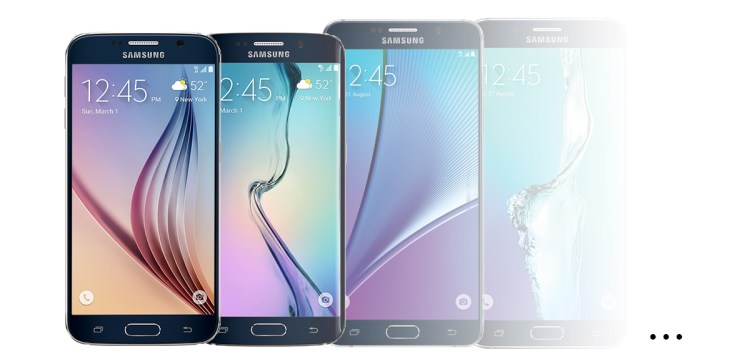Late last year, Samsung revealed that it was planning on releasing significantly fewer handsets in 2015 than it had in 2014 — 25 to 30 percent less, specifically. Now, as 2015 draws to a close, we can look back at the company’s total output for the year (thanks to GSMArena’s Phone Finder tool) — 36 Android-powered models — and calculate that it did indeed cull its 2014 lineup of 54 phones by even more than that: a full 33 percent reduction.
Yet somehow it doesn’t feel like Samsung was any less prolific this year. There were still a number of devices with endless plays on the words Grand, Max, Plus, and Prime, along with numerous models in the A, E, J, and S series, plus a smattering of singular releases like Note 5 and Xcover 3. Why does 36 not feel much smaller than 54?
Before we get into that, it’s important to remember one thing: Samsung didn’t streamline its lineup for the sake of overwhelmed consumers or exasperated tech writers; this was purely an economic decision.
Quarter after quarter since 2013, the phone division’s average margin has shrunk from a healthy double-digit percentage to an anemic single-digit one. By slashing the number of SKUs and increasing the number of shared components among them, the company is hoping to see significant cost savings in both material procurement and inventory management.
Flagship creep
To understand the perception that Samsung is producing more phones than it actually is, I think it helps to characterize the perspective with which mobile enthusiasts view the overall market: For the vast majority of them, it is in terms of so-called flagship devices.
Flagships are the (formerly singular) top-of-range handsets which are sold largely on a margin, as opposed to volume, basis. They tend to contain the very best components that a manufacturer can source, and are sold at premium prices that exceed their bills of material by several times. As aspirational products, they’re naturally going to be more widely discussed than lower-end, budget-conscious fare.
It just so happens that Samsung’s mobile division is in the midst of a multiyear flagship creep, a steady six-year march from the original Galaxy S (2010’s one and only Samsung flagship) to this year’s total of four. Next year’s Galaxy S7 may be one among five or even more handsets whose specs earn them that classification.
Number of Samsung flagships:
2010 – 1
2011 – 2
2012 – 2
2013 – 2
2014 – 3
2015 – 4
2016 – 5+ (rumored)— Evan Blass (@evleaks) December 14, 2015
The year 2011 saw an important expansion of the flagship category when Samsung added what would become a traditional second-half flagship in the form of the original Galaxy Note. The situation remained static for three years before 2014 saw the addition of a second Q3 introduction — and third for the year overall — the Galaxy Note Edge.
This Edge form factor — consisting of a curved screen that tapers down the devices’ sides — proved popular enough that 2015 added a curved variant to the first-half flagship as well, the Galaxy S6, in the form of the Galaxy S6 edge. While there was no sequel to the Note Edge, Samsung instead paired the second-half Note 5 up with a similar enough product, the S6 edge+. That makes four flagship-class handsets for the year.
Too much choice?
There’s nothing wrong with a company offering multiple high-end devices; as the smartphone category gets even more granular and subdivided along lines of size or form factor, these subcategories will naturally have their own best-in-class offerings each year. In Samsung’s case, it has two size tiers, regular and phablet, as well as two basic body styles, flat and curved.
But the end result of this new status quo is something neither consumers nor the media are yet totally familiar (or even comfortable) with: four handsets jockeying for the mindshare and newsprint that used to be dedicated to just one.
It’s something we’ll need to learn to live with, because next year promises more of the same, if not an increase in top-tier models. At last count, the rumor mill has hinted at the existence of no fewer than five Samsung flagships: Galaxy S7, S7 edge, S7 Plus, S7 edge Plus, and Note 6.
On one hand, such a cornucopia of high-end fare speaks to the continued health of the overall mobile market. But it also creates even more choice for a consumer already inundated with great options from numerous manufacturers. Want the best phone you can get from Samsung? That’s no longer an easy selection to make.
VentureBeat's mission is to be a digital town square for technical decision-makers to gain knowledge about transformative enterprise technology and transact. Learn More

